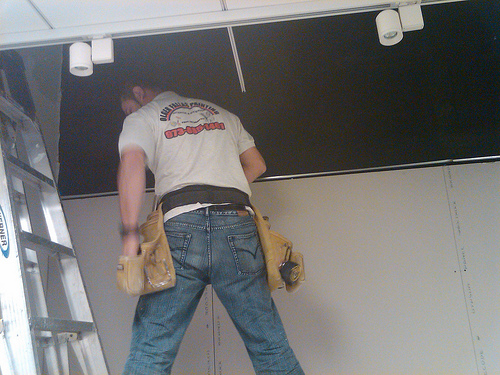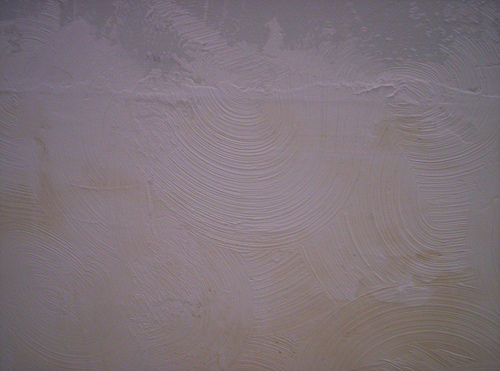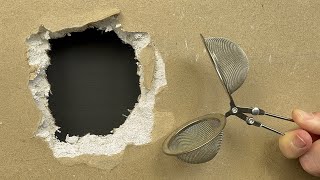[post_name how to repair drywall DIY Versus Professional Drywall Installation and Repair

Do it yourself drywall installation is just one of the much more useful jobs you could take on as a home owner. Whether you've obtained a ceiling that's been harmed by a leaking roofing or a/c pan, or some brand-new walls that belong to a remodeling task, eventually, you'll require drywall deal with your residence. The great point is; with the best expertise, the appropriate devices, and also some method; practically anybody could do it. The standard thing you should understand include:
Materials-This might seem pretty obvious, however there are a couple of various choices.
- Density-Drywall or sheetrock is available in 1/4", 1/2", as well as 5/8" thicknesses. The most typical in residential is 1/2". 5/8" is a lot more frequently utilized in industrial work as well as is a demand of building ordinance in lots of locations due to it's higher fire resistant score. 1/4" is primarily used over various other products such as paneling or plaster when a different kind of wall surface is preferred. If you're doing a spot or fixing; check the thickness of the existing drywall before buying your new material to insure that it matches.
- Application-The majority of wall surfaces and ceilings will have basic gray sheetrock. Nonetheless, in high wetness locations, such as bathrooms and also kitchens; utilize the more water immune eco-friendly rock. There is also, now, a drywall that consists of the very same sort of concrete fiber products used in tile backer boards for use on wall surfaces that will completed with floor tile.
- Joint Substance-Additionally called sheetrock mud, this is the crucial element to an effective do it on your own drywall setup. This will be available in pre-mixed paste like form in boxes or containers or powdered, in bags, that should be blended with water. There are likewise rapid drying out kwikset products that can be made use of for patches as well as fixings.
- Joint Tape-This could be bought in the typical paper kind, which should be used with joint compound or in fiber tape, which is frequently used out of commission because it gets rid of one step of the procedure.
- Nails or Screws-Traditionally, nails have been utilized in residential work as well as screws in commercial (due to using metal studs. Nonetheless, screws have come to be much more in domestic as a result of the rate of screw guns.
- Drywall Knives-These kinds of knives are not made use of for cutting, yet for spreading the mud, taping the joints, and drifting as well as skimming; as well as, really look like a spatula a lot more than a blade. They come in a range of sizes from regarding 3" (made use of for taping joints) as much as 12" (for floating as well as skimming). You will, probably, require at the very least 3 dimensions for any job, as each skim coat obtains a little bigger.
- Mud Pan-These long rectangle-shaped pans come in steel or plastic as well as are utilized for holding the joint compound. They're narrow adequate to hold with one hand, while using the knife with the various other.
- Utility Knife/Sheetrock Saw-A lot of the cutting of sheetrock is now maded with energy knives with compatible blades. Modification them as commonly as required for a clean very easy cut. Sheetrock saws are lengthy (about 10") triangular saws with little manages and are utilized primarily for cutting openings for pipes and electrical.
- High Powered Drill & & Paddle Little bit-If you're doing a little repair service; you could mix the mud manually with a drywall knife. But also for bigger do it on your own drywall installment projects, it's crucial that you have a solid sufficient drill to mix the mud with a paddle for the appropriate consistency and also to get rid of lumps.
- Protect it Good-Don't stint nails or screws. You do not want movement when somebody raids the wall. Stopping working to correctly fasten it will bring about cracks in the mud.
- View For Intermediaries-Maintain a close eye on switches, plugs, as well as phone jacks. They're very easy to cover up and also hard to find later on.
- Have Enough Aid-Sheetrock is heavy. Ensure you have someone to assist you hold it while you get the screws or nails in. This is specifically true when hanging ceilings.
- Countersink the Bolts-Make certain the nails or screws penetrate beyond the surface to make sure that they could be covered with mud.
- Tape the Seams-This can be done with either the paper or fiber tape. With paper, spread out a slim coat of mud over the joint, the, utilizing a drywall blade; press the tape into the mud as well as over the seam. Then make use of the blade to remove the excess mud. When this procedure is finished; you must wait on the mud to dry prior to applying the first skim coat. The advantage of the fiber tape is; it complies with the sheetrock without the demand for mud. So, you could right away apply a skim coat.
- Drift and Skim-This may be performed in one layer or it could take 2 or 3. The idea is to have an also surface area without increases, bumps, and dips. Among the tricks to a successful do it on your own drywall setup is blending the mud to the right consistency so it spreads quickly. The other is just great old fashioned practice. Some people require to it quicker than others. Yet, the a lot more you do it, the much better you'll be.
Drywall Plastering - A Great New Method
It is not uncommon to find cracks in a concrete structure of a house. This chooses brand-new houses in addition to older ones. While some cracks can indicate a major issue with the residence, several are considered normal shrinkage cracks. Let's review the problem of cracks in a foundation and also just what it indicates to you.Minor shrinking fractures are common in new as well as older house foundations. Put concrete reduces as it treatments, or resolves. As the concrete diminishes, small upright or 45 level cracks may create over time at basement home windows, door openings, or edges. We call these stress and anxiety or surface fractures. These cracks are 1/4"vast or much less as well as do not affect the structure of the structure. If you see small splits in a new structure, or an old foundation for that issue, don't panic. The issue here is moisture breach right into the cellar or crawlspace. This is a relatively simple fix with epoxy insertion or concrete caulk. On older homes these fractures could return, particularly if the wall surfaces are made of lath and plaster. But, don't be distressed, it's simply the residence remaining to settle.The very same could be true of cracks in the drywall of the residence. Tension or clearing up splits will be little in width, about a 1/4 inch, and also address a 45 degree angle from the corner of the door frame or home window. Once again, don't stress as this is not an architectural concern but even more cosmetic. Repair service of the crack involve easily performed drywall fixing, which can be accomplished in hardly any time.More serious cracks in the foundation or wall surfaces do need the interest of a qualified professional to examine and also deal with. The sort of split that considers attention is the straight crack. These splits are often come with by bowing, building, or leaning of the structure wall surface. These sorts of splits might indicate a structure concern, which may be costly to deal with or if it can be corrected.There are additionally additional types of fractures that may be connected to architectural activity. Consisted of in the extreme crack group are fractures that have deflection. By this we imply that one side of the split is greater or past the opposite side of the split. Also splits that run diagonally across a wall surface, or in a staircase step style. And also finally, cracks on the interior finish (drywall or lathe as well as plaster )that are in the very same area as cracks on the outside of the home.Repair of these structural activity or structural damages splits could include several different avenues. Most of them will certainly include fixing of the exterior along with to the indoor portion of the
home.That in a nutshell is a discussion of structure or wall surface splits in a residence. If you see these types of splits, it might be best to have actually a qualified specialist inspect
the splits. The specialist can after that provide you an idea if they are typical resolving fractures or among a more severe nature.

How to Install Your Own Drywall
Drywall repair Tallahassee - drywall repair
